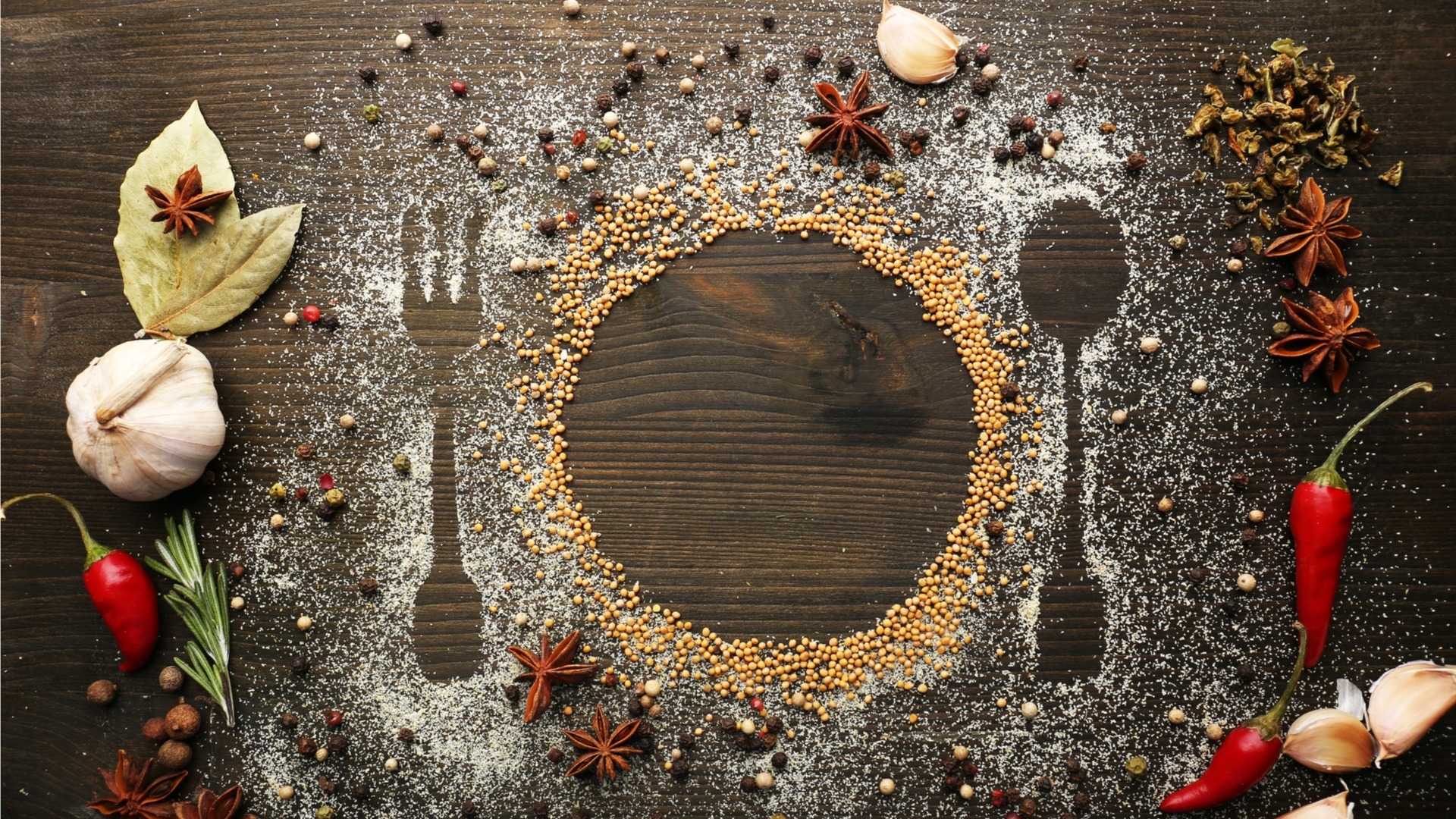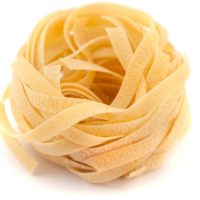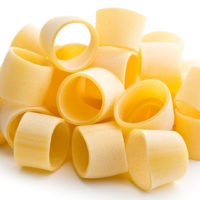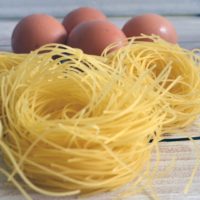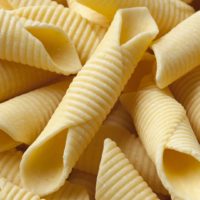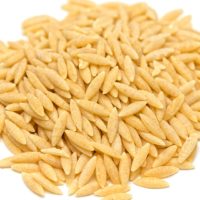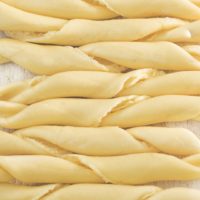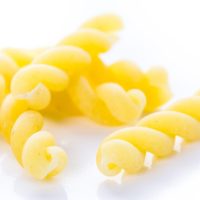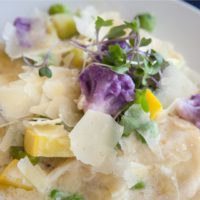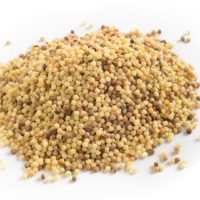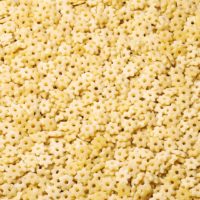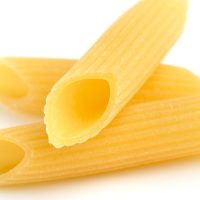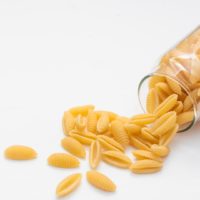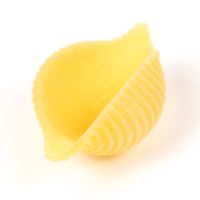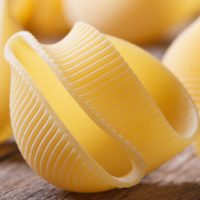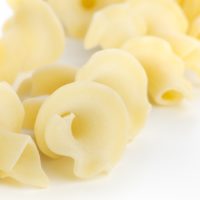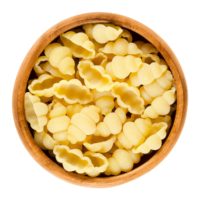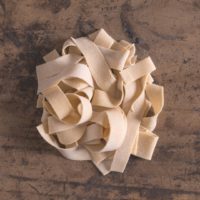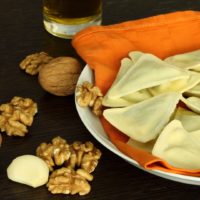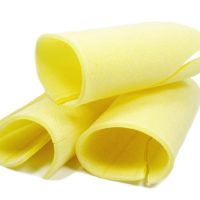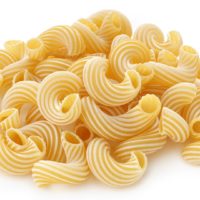WHAT IS FETTUCCINE? Long before some guy name Alfred smuggled as much dairy as humanly possible (butter, cheese and sometimes cream) into a creamy Alfredo dish, fettuccine has been a hit. Meaning “little ribbons”, the name is misleading in that this pasta cut is wider than linguine (who in turn is wider then spaghetti). This […]
GOURMET ARCHAEOLOGY
This section provides an introduction to the various ingredients that go into our everyday foods!
ARCHAEOLOGY OF PASTA – Calamarata
WHAT IS CALAMARATA? These thick rings of pasta resemble sliced calamari (squid) or a shorter version of paccheri pasta (though an easier cut to make well due to its’ shorter height). Its’ name means “baby squid”. In keeping with this, calamarata rings are occasionally dyed black with squid ink. The large diameter of the hole […]
ARCHAEOLOGY OF PASTA – Angel Hair (a.k.a. Capelli d’Angelo)
WHAT IS ANGEL HAIR? Dating back to the Renaissance, this pasta is very thin so cooks extremely fast. Capelli d’Angelo is dried in “nests” or balls since they are so fragile. As with other cuts, the more fragile the pasta the lighter the sauce used. And few are more ethereal then the hair of an Angel. It […]
ARCHAEOLOGY OF PASTA – Garganelli
WHAT IS GARGANELLI? The name comes from garganel or the “chicken gullet” it resembles. This famous cut is made with egg pasta. To make it, you press a square piece of pasta dough onto a ridged surface and roll the corners. The result is an etched tube of pasta whose ends are cut at an […]
ARCHAEOLOGY OF PASTA – Orzo
WHAT IS ORZO? Basically this cut looks like rice but is actually pasta. From the Italian word for “barley”, orzo with its unique shape is a master of disguise. Versions of this pasta can be found in other cultures like the Greek kritharáki or Spanish piñones (which is also the nickname for pine nuts). Another […]
ARCHAEOLOGY OF PASTA – Trofie
WHAT IS TROFIE? Much like in New York City, calling Trofie a twisted bastard can be an insult or a compliment. The name comes from the verb “to rub” referring to how it is made. The hand gesture involved looks like a bad magic trick. But the results is a nice pasta. Legend has it […]
ARCHAEOLOGY OF PASTA – Gemelli
WHAT IS GEMELLI? Looking for sexy twins to perform at your next bachelor or bachelorette party? Get a salty pot of boiling water and watch gemelli dance! This pasta’s name comes from the Italian word meaning “twins”. While it might look like two separate strands of pasta, gemelli is a single strand twisted around itself. […]
ARCHAEOLOGY OF PASTA – Mezzelune
WHAT ARE MEZZELUNE? These stuffed half-moon ravioli cousins are made from a buckwheat, semolina flour mix. A dumpling-type pasta, they can be boiled or fried and served with sugar and honey (if the stuffing is appropriate). WHERE ARE MEZZELUNE MADE? Being a northern Italian staple, Mezzelune has snuck across the Tyrolian Alps to also […]
ARCHAEOLOGY OF PASTA – Fregola
WHAT IS FREGOLA? From the Latin word for “crumble”, this Sardinian wonder has followed in the family footsteps of orzo for hundreds of years. Fregola is a pasta that looks like roasted cous cous. Traditionally it is hand rolled and then baked in ovens. This gives the pasta kernels a range of brown and yellow […]
ARCHEOLOGY OF PASTA – Stelline (a.k.a. Stellette)
WHAT IS STELLINE? Stelline is a star-shaped pasta. It is often used in soups for children due to its cute shape. Stelline’s tiny size and hole in the middle give it a quick cook time. A larger version exists called Stelle or Stelloni. Myth has it that these pasta constellations are popular in Italian wedding […]
ARCHAEOLOGY OF PASTA – Penne
WHAT IS PENNE? Penne is from the Latin penna meaning feather or quill (aka “pen”). There are many versions of this very popular pasta. But they break down into two groups – the smooth (“lisce”) or the grooved (“rigate”). Variations like penne mezze for example is a rigate that has a larger diameter. Penne’s larger cousin […]
ARCHAEOLOGY OF PASTA – Cavatelli
WHAT IS CAVATELLI? Cavatelli comes from the verb “cavare” or “to hollow out”. Traditional recipes using this cut focus on vegetables since meat was scarce back then in Puglia. Over time this pasta, being easy to make, spread quickly throughout homes in Italy. With its folded, mini bun shape, it is a popular substitute […]
ARCHAEOLOGY OF PASTA – Conchiglie
WHAT IS CONCHIGLIE? The “shells” of pasta, the name comes from the Italian word “conchiglie” or seashell (big shocker there I know). Traditionally they are made in 3 different sizes small (conchigliette), medium (conchiglie), and “holy cow that is huge”(conchiglioni). Some producers take great pride in making these “conch” shells almost life size. While cool, […]
ARCHAEOLOGY OF PASTA – Lumache
WHAT IS LUMACHE? Another shell shaped pasta, lumache is actually named after a snail. Many Italian chefs looked outside their kitchen window for pasta inspiration, basing their forms on the plants, animals and apparently snails around them. This cut has a cool shape with a pinched end which helps trap sauce in the main part […]
ARCHAEOLOGY OF PASTA – Gigli
WHAT IS GIGLI? Also known as campanelle, this cut is made in the shape of a little bell or flower. The ruffled edge and central cone are both elegant and symbolic of its home town’s coat of arms. With a trumpet shape and furled edge, gigli is great for trapping thicker sauces. WHERE IS GIGLI […]
ARCHAEOLOGY OF PASTA – Gnocchi Shells
WHAT IS GNOCCHI? Gnocchi means “knot” or “knuckle” in Italian. This cut has been popular since before the birth of Christ. It was first brought to Italy by Roman soldiers returning from the Middle East. Regional Italian fresh gnocchi recipes began to crop up. The shells were stuffed with whatever ingredients local farmers had leftover […]
ARCHAEOLOGY OF PASTA – Pappardelle
WHAT IS PAPPARDELLE? These flat, broad, long ribbons of golden egg dough decorate many a Tuscan table. Their reputation for deliciousness even extends to their name, derived from the Italian verb “pappare” or “to gobble up.” Similar to fettuccine but wider, pappardelle tends to be used with your really hearty sauces. Have a noisy neighborhood duck […]
ARCHAEOLOGY OF PASTA – Pansotti
WHAT IS PANSOTTI? Known as the ravioli of the Italian Riviera, pansotti are Ligurian stuffed pastas. Each fat triangle shape has a vegetable filled beer belly. Despite their flabby appearance, pansotti are considered a ravioli magri (lean dumpling). “Lean” however doesn’t mean boring. Anything from edible wild flowers to a dash of white wine is […]
ARCHAEOLOGY OF PASTA – Paccheri
WHAT IS PACCHERI? Paccheri are tall, hollow tubes of dry pasta. They are a staple of Napolitan cuisine. Considered a poor man’s pasta in the past, they are among the more difficult cuts of pasta to make exceptionally well. To be more specific, they are very difficult to dry well. Creating the circle of wet […]
ARCHAEOLOGY OF PASTA – Cavatappi
WHAT IS CAVATAPPI? The name cavatappi comes from the Italian word for “corkscrew”. It also has other less imaginative names like “spirali”. In keeping with its’ nickname, this spiral pasta is hollow with grooves on surface. The number of twists varies by version with some having as few as one. Wikipedia has a whole explanation […]
